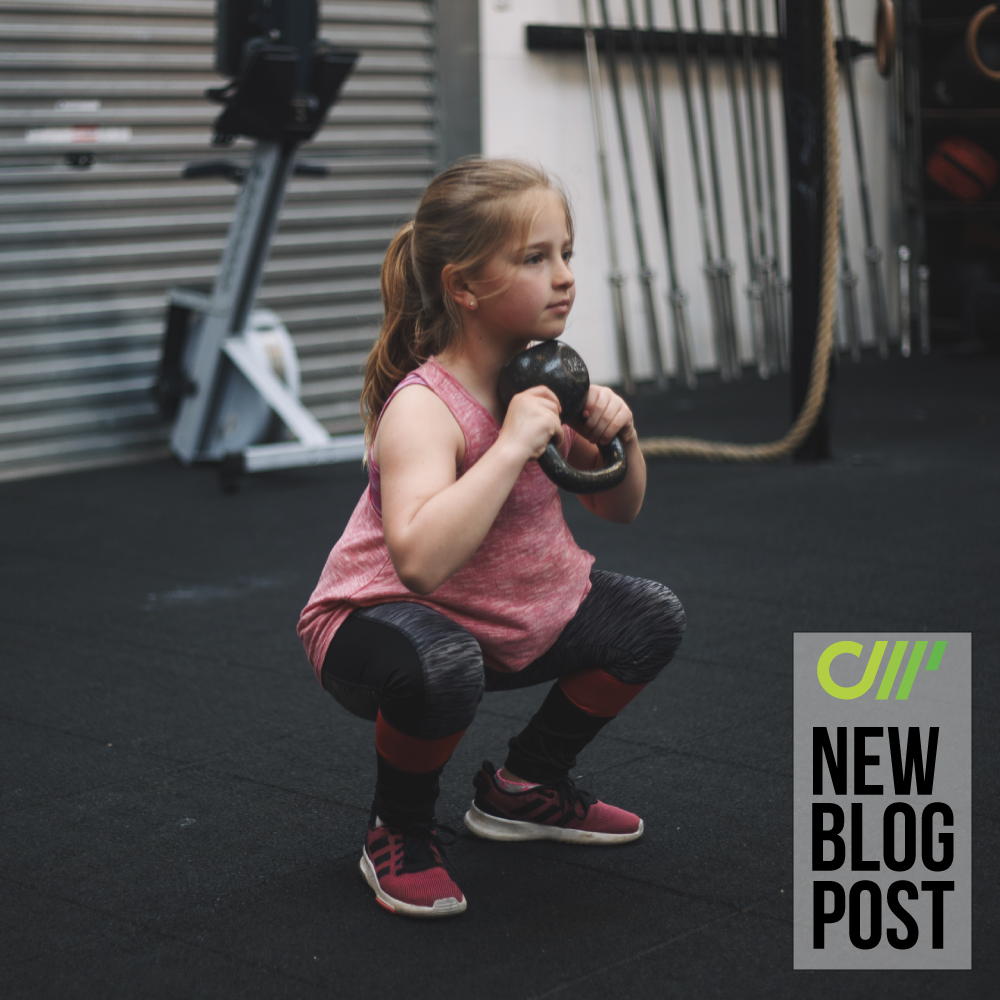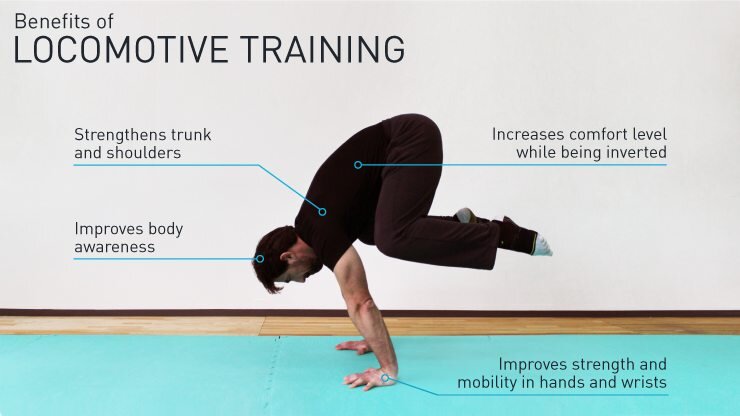Prior to my arrival, the pupils at the all-girls school I work at had no experience of a structured strength and conditioning program, so these lessons are as much my reflections on my first year leading the strength and conditioning program at Downe House school as they are about doing this in the context of an all-girls school where S&C is new to all.
Prioritise volume for upper body strength
With male athletes typically having a much greater proportion of upper body musculature, female athletes may have a harder time progressing their pushing and pulling strength when compared to male athletes. I only see the school\’s scholars once a week for 45 minutes, so my upper body progressions are as follows:
Bent leg inverted row, straight leg inverted row, feet elevated straight leg inverted row, chin up lowers.
Typically, I will progress the girls to the next variation when they can perform at least 15 strict repetitions.
Whilst banded chin-ups are great for a quick confidence boost I am not entirely convinced of their use for a couple of reasons.
#block-6f8f672a89990b0ecec6 {
}
Firstly, banded chin-ups do not teach athletes how to properly set their shoulders (think shoulders away from the ears) in pulling exercises.
Without the ability to do so athletes tend to recruit smaller muscles in and around the elbow and overly recruit their upper traps (neither of which is really designed to pull large loads, such as your own body weight, over the top of a bar)
Furthermore, I feel the volume of work around the scapula needs to be prioritised when attempting to improve pulling strength. As such, I would much prefer (for example) to have my female athletes perform 3 x 12 bent leg inverted rows than 3 x 5 band-assisted pull-ups.
#block-yui_3_17_2_1_1569511286670_29695 {
}
On the subject of the scapula, when it comes to pushing strength I am a big fan of hands elevated press-ups.
The number of notches we have on our squat racks makes it very easy to adjust the ‘load\’, which I feel is one reason bodyweight strength training is something I have perhaps underutilised in previous programs/positions.
From a confidence perspective, progressing a youth female athlete to their first quality press up or pull up does wonders for their buy-in into a strength and conditioning program.
Body imagery is a big deal
As a male strength and conditioning coach, I have no shame in admitting that I do not have the same comprehension of just how big an issue body image is for female athletes. I also think it\’s worth noting that dealing with body image issues is something S&C coaches by and large receive nowhere near the support they should do.
A few years ago, I was fortunate enough to sit in on a workshop from a sports psychologist reporting her PhD findings on self-talk in elite athletes, and the sources they derive self-confidence from.
Below is an extract from an elite female athlete, ranked in the top 3 in the world for her sport…
\”I arrive in competition and I am one of the larger athletes and sometimes when I arrive at competitions I look around and see all these stick insects wandering around and immediately start talking myself out of the competition\”
Although I deliberately attempt to divert conversations away from aesthetics and try to emphasise athletic performance, if an elite female athlete (where physical capabilities such as size, or strength are undoubtedly important) is having body image concerns…then you can be damn sure that young girls entering the most confusing part of their life, where their body changes the most, are having similar concerns.
On the same note, I\’ve had girls say to me after 5 sessions they are concerned their legs are getting bigger.
Whilst gains in muscle mass are not possible within 5 sessions, I am a big believer that an athlete\’s belief systems (positive or negative) can be a huge driver in a strength and conditioning program\’s success (or lack of).
The many reasons why these gains muscle mass in such a short time frame probably warrant a blog post in themselves. For the sake of keeping things simple the aspects I will try to emphasise to the youth female athletes are below:
-
Lack of key muscle-building hormones (i.e. testosterone) compared to male counterparts
-
Insufficient calories (especially protein)
-
Minimal exposure to training to resistance training (1 x 45-minute session per week)
-
Too much aerobic work relative to strength training (up to 9 sessions a week of sporting activity vs 1 x 45-minute session)
*One of my favourite light bulb moments in the female athletes I have worked with this year comes from a session that involves a combination of bodyweight movements and using their partner as a form of resistance.
The girls think nothing of performing loaded carry variations with their partner…or regressions of chin-ups…despite the fact they typically lift more in these variations than the dumbbell or barbell counterparts.
It\’s when I round up the lesson by asking them if any of the girls are worried that doing something like a chin-up will get her bigger…or if holding their partner will get them muscly, that they look at me somewhat blankly.
Then comes the lightbulb moment where the girls realise that what they might do in a gymnastics lesson might involve heavier loads than what we use in the S&C suite…but I\’ve yet to come across a girl who is reluctant to participate in gymnastics for fear of getting massive.
Efficiency is King
With the minimal time I get to have the scholars in our strength and conditioning suite maximising the work we get done is a major factor in my programming. To give a bit of context, sadly our S&C suite is not blessed with space, our dumbbells only go up to 10kg and our kettlebells jumps are a quite big for female athletes, especially on upper body lifts (12,16,20,24kg)
If I can have 3 girls simultaneously using the same rack for hands elevated press-ups (one with their hands on the bar left in the rack, and another girl either side using the pins), this for me is a much-preferred choice than having 2 girls wait for one specific kettlebell to become available. This 3-in-1 job means frees up more time to either address mobility restrictions or simply get in more volume of work elsewhere.
Whilst scientific journals explain the benefits of ordering certain exercises in a specific manner (for example, lower body explosive work like plyometrics might come before moderately heavy loads which might come before something like a calf raise) sadly in 45 minutes it\’s all about keeping the room flowing as best as possible. Pin heights are pre-set to the height of the smallest member in the group. If girls all have hip thrusts programmed the girl starting on the lightest weight will have had the bar set up for them first, with the strongest girl in the group hip-thrusting last to minimise the time spent in the session simply changing the weight on the bar.
The Benefits of Locomotion Training
Two gems I have stolen from famous strength coach Dan John are:
-
‘get the basic patterns and movements into a program with the least amount of teaching, learning and failure you can maintain.’
-
‘allows the body to teach the body what to do’
With athletes new to training it can get frustrating and perhaps somewhat boring for them to hear the same coaching cues over and over.
Locomotion training allows youth athletes to ‘play’ with the fundamental movements and explore what their body is capable of.
Spending time in a squat position through a movement such as the Frogger will not only improve mobility, but also acts as a great teaching tool.
Whilst foam rolling can have its benefits you still need to utilise any short term improvements in mobility. Not to mention, in my experience as coaches we are too quick to claim someone a youth athlete has ‘mobility restrictions’ when actually, it may just be a simple lack of control or experience with a movement is the factor masking itself as a lack of mobility.
To a certain extent I throw out the sets x reps approach, and my youth athletes ‘play’ with the fundamental movements.
I challenge my athletes with different means of getting into and out of a given position. Here’s an example of a progressively loaded squat pattern, note how the progression is in the form of complexity, or an increased demand on coordination.
For me it’s not just about repetition after repetition of squats or hip hinges…it’s about challenging these patterns in ways other than just external load (although this is still important).
Here are some other brief examples of challenging these movement patterns through locomotion based training:
-
Squat patterns Frogger/Monkey
-
Hinge pattern Bear
-
Pushing patterns any form of crawling work
The reason why I enjoy using locomotion type training for youth athletes is:
-
It encourages athletes’ to ‘play’ with movements and develop creativity. On the field of play a coach’s instructions can only do so much, sometimes an athlete needs to think for themselves
-
Athletes soon notice the difference between their movements and their teammates movements. In slightly older athletes this can lead to productive conversations regarding movement quality, and why certain athletes can do things which they cannot…and in younger athletes simply getting them to notice this difference is the first step in enabling them to coach their team mates.
-
It gets away from this sets x reps approach of strength and conditioning (although it will be necessary at some point, counting can be boring for young athletes). By doing this rather than having youth athletes get hung up on how many reps they can do of a given movement, their focus changes as to how good they can make the reps of a given movement.
#block-yui_3_17_2_1_1569511286670_17960 {
}
FUNdamentals
As obvious as it may sound, being surrounded by weights may not be every female athlete’s idea of fun.
The key to getting better at anything is deliberate, quality practice.
Whether you subscribe to the 10,000 hour rule or not, the fact is to get good at anything you need to spend time doing it.
Volume (or the amount of given exercise an athlete does) is a key aspect to a youth athlete getting better in a given exercise, .as is their level of attentiveness and effort.
In order to get athletes to put in the level of attention required…they need to enjoy what they are doing.
Below are a few bullet point tweaks of fundamental movements that have worked well for me:
-
Squatting movements
-
Water bottle goblet squat (the full water bottle brings a game element to the goblet squat, so now the athlete sees the challenge as don’t get soaked, which sees them demonstrate more control over the exercise).
-
Split squat with overhead netball pass in bottom position (the number of passes in the bottom position increases the time under tension in this position, increasing the stability, strength and mobility required from what is effectively a deep lunge position).
-
-
Bracing work
-
The push up position plank (PUPP) is the starting point for upper body strength for me. This position can be challenged by partner A challenging partner B’s PUPP position by pushing them, using bands to attempt to pull them out of position with bands.
-
After this having partner A raise partner Bs feet can challenge both partner’s ability to maintain posture, and when partner A picks up on leg from the side…both partners have to demonstrate the ability to resist rotation and sideways bending…and this is much more enjoyable than a suitcase carry (and avoids the conversation about callused hands from carrying heavy dumbbells)
-
Reactive leg drops from press up position, crab position and if you’re youth athletes have a really solid foundation, from a TRX front lever type position
-
-
Hinge patterns
-
GMB Bear
-
Face against the wall deadlifts (athletes with poor mobility or movement skill, end up head butting the wall or falling over in the bottom position, which makes for a great self-correction tool)
-
Conclusion:
-
Maximise the total volume of work done around the shoulder girdle for youth female athletes. Any type of work that forces female athletes to support their weight using their arms will be beneficial (hanging leg raises, push up position planks, bent leg inverted rows…even prioritising goblet squats and goblet split squats can be useful isometric work for the shoulders before progressing onto barbell movements)
-
Variability breeds stability. Loading movement patterns through different means (i.e. locomotion training) can improve an athlete\’s ability to perform the fundamental movement patterns than simply repeating the exact same movement
Recommended Resources
Any of gold medal bodies (GMB) programs https://gmb.io/
Quit worrying about sets and reps https://www.youtube.com/watch?v=YVbv__ad8sI
About the author
Todd Davidson is a UKSCA accredited Strength and Conditioning Coach currently working at Downe House school, in charge of the scholarship athletes\’ strength and conditioning program whilst introducing athletic development into the P.E curriculum.Todd\’s current interest on youth athletes was sparked by gaining experience with University, Paralympic and Olympic athletes as part of his internship roles with Duham University, Middlesex County Cricket Club and the English Institute for Sport, with GB Boxing and Paralympic Table Tennis, and speaking to other practitioners as to how this journey can be scaled more effectively to reduce injury risk, enhance performance and improve athletic development in youth athletes.
Todd can be found via:
Twitter: @todddavidson93
Facebook: search Todd Davidson P2P coaching
Instagram: @ToddDavidsonP2Pcoaching
#block-yui_3_17_2_1_1569511286670_13659 {
}



